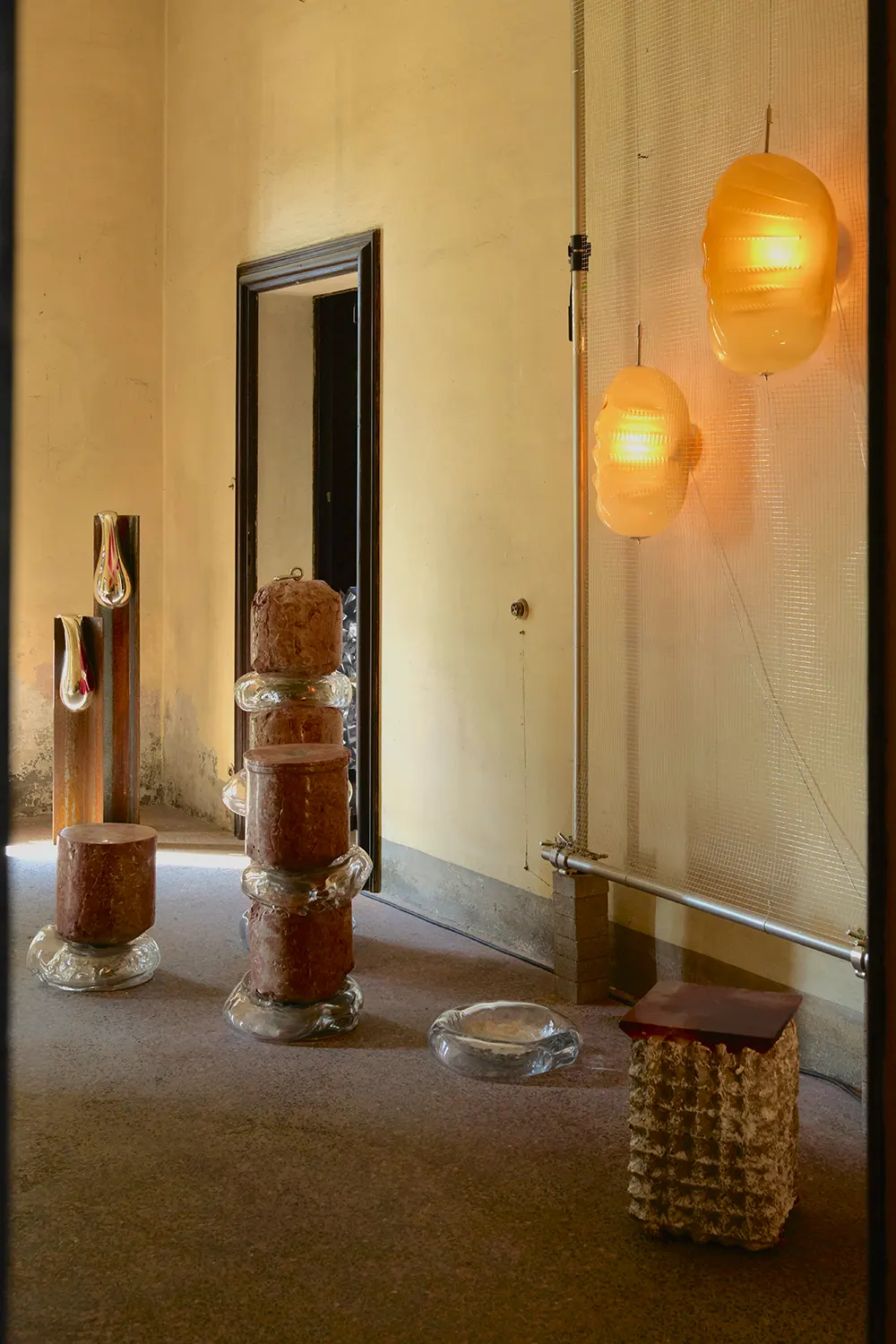
Founder Zeynep Arolat of ZAROLAT sits down with editor Katarina Djoric to discuss OMNIA, the gallery’s debut at Alcova during Milan Design Week, in an interview for ARCHISCENE Magazine. Rooted in a belief that art and design exist on a fluid spectrum, OMNIA presents a collection shaped by human touch, raw materials, and an intuitive curatorial vision. With pieces ranging from sculpture and lighting to vessels and furniture, the show embraces material tension, spiritual resonance, and a resistance to rigid categorization.
Set within the textured historic walls of Villa Bagatti-Valsecchi, OMNIA unfolds as a contemplative space, where form and function dissolve into one another and sustainability begins with attention rather than aesthetics. The conversation touches on the show’s quiet radicalism, the gallery’s ethos around sourcing, and the creative freedom found “in between” art and design. ZAROLAT’s Dumbo location emerges not just as a showroom, but as a collaborative platform for slower thinking and deeper making.
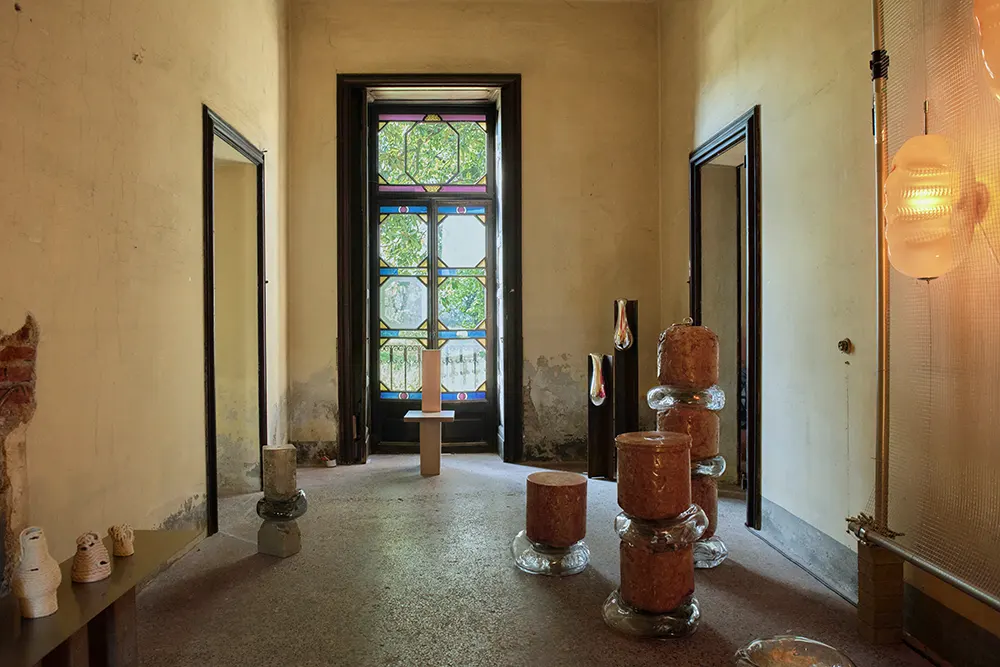
OMNIA means “everything” in Latin. What drew you to this title, and how does it reflect your vision for the show?
The title matches the spiritual vision behind this show. We as creators get very deep into our process, whether intellectually or physically – getting very close with nature when working with raw/natural materials. I believe that we are all one within the universe and OMNIA refers to our connection as humans, with the natural world – by presenting a distinctive collection of works all made by the human hand and the use of materials coming from the Earth.
You presented OMNIA during Alcova at Milan Design Week. How did that context shape the way the exhibition was received, especially as a debut for ZAROLAT?
Alcova, founded by Valentina Ciuffi and Joseph Grima, is a groundbreaking platform that brings together challenging and critical work by artists and makers. Accordingly, the audience that it brings is also extraordinary. With our debut, we were immediately in dialogue with an international audience of independent thinkers – they not only contributed to the conversations about the exhibition but truly defined them, I felt, as they brought their own perceptions into the room. Our site, Villa Bagatti-Valsecchi, was an excellent, historical backdrop with its worn textures and rawness, enhanced the curation as a place with memory, and naturally supported our spiritual vision for this show.
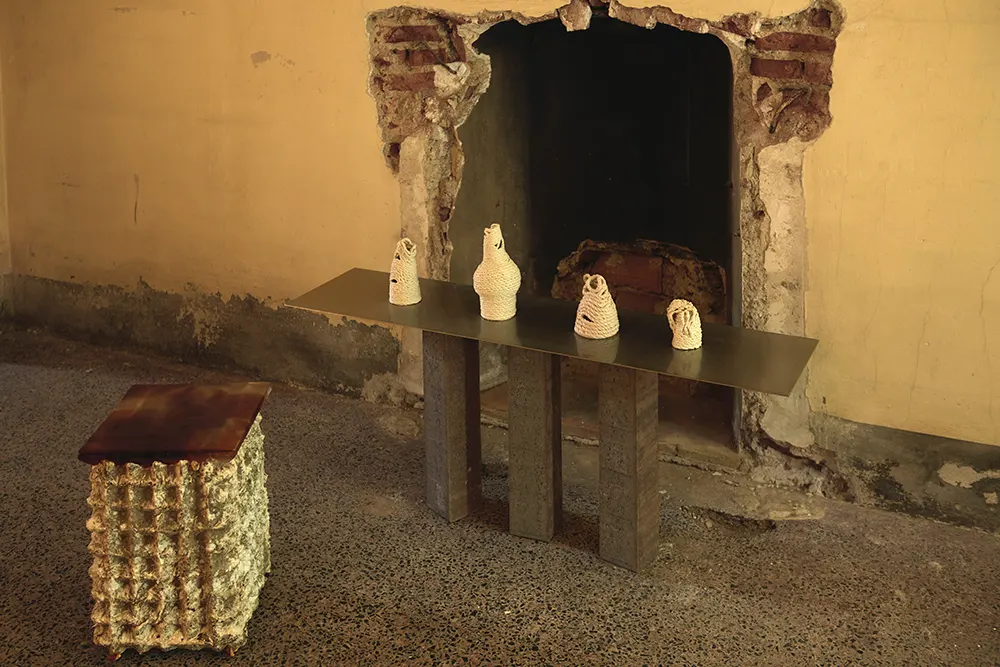
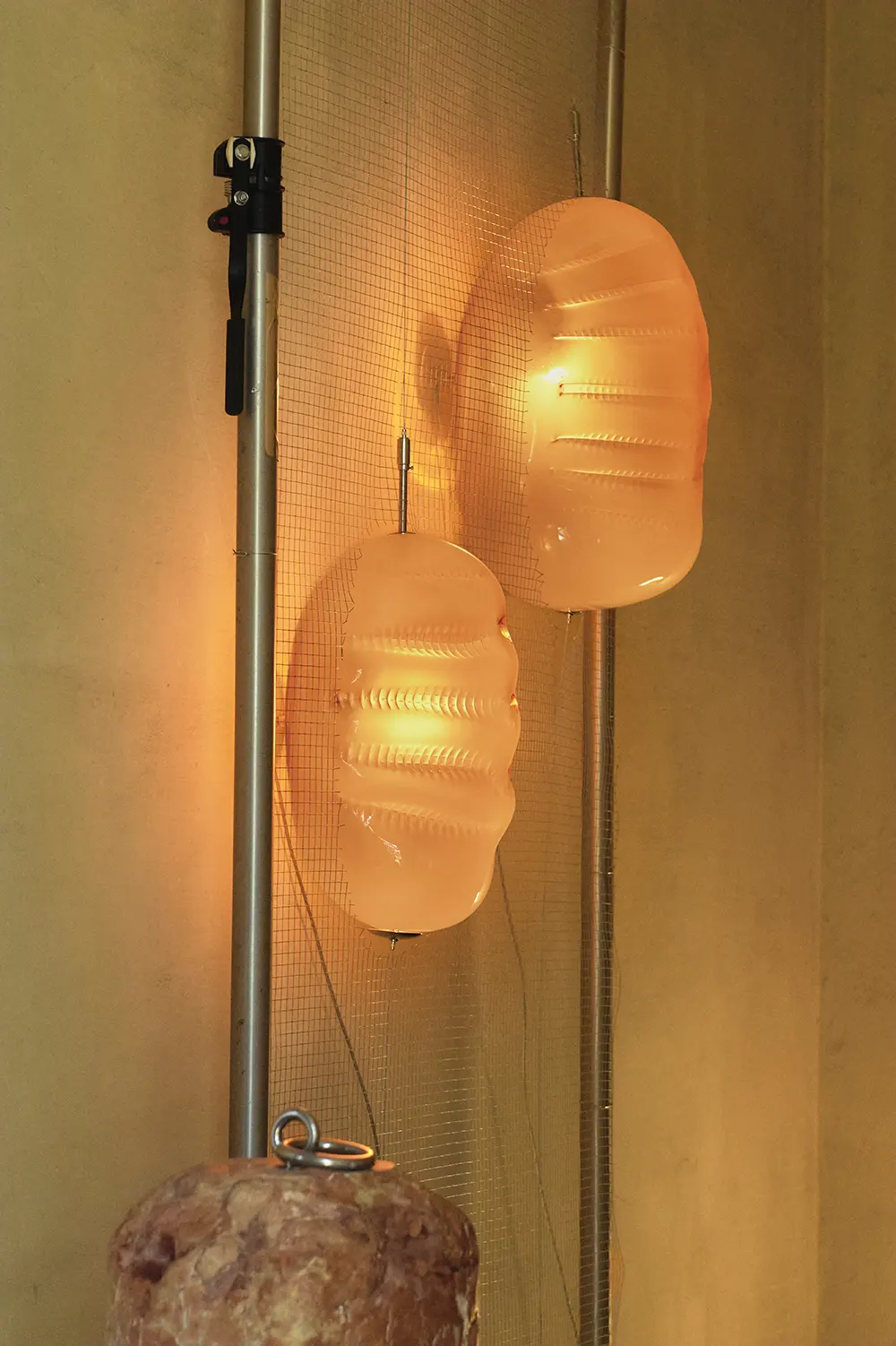
The show brought together sculpture, lighting, furniture, and vessels in one fluid space. What guided your decisions around curating such a materially diverse collection?
In all of our curations we have the tendency to create a balance between mediums, materials and the disciplines of artists/designers. Although in contrast, the delicate placement of each very unique object defines the overall flow within the space making them all work as one. It’s like choreography, but it only makes sense if all the parts are included and presented.
ZAROLAT was founded with the intention of dissolving boundaries between disciplines and categories. For OMNIA, I wanted to curate a space where these distinctions collapsed and where the diversity of materials creates fluidity within the space as well as our perception of thinking about art and design objects. As a gallery, we protect and highlight the freedom to move between mediums and to let artists work on their own terms, resisting the pressure to define things too narrowly.
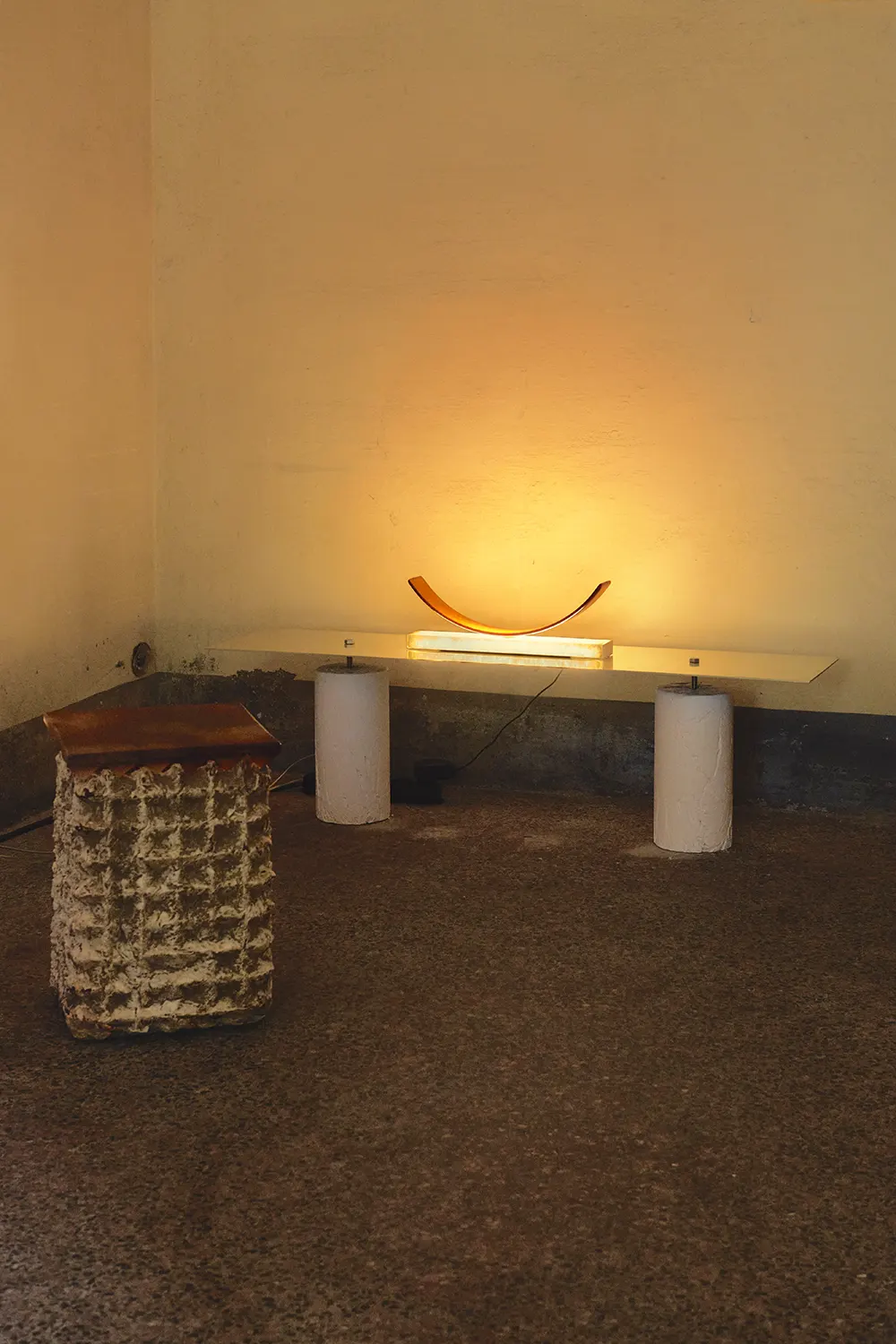
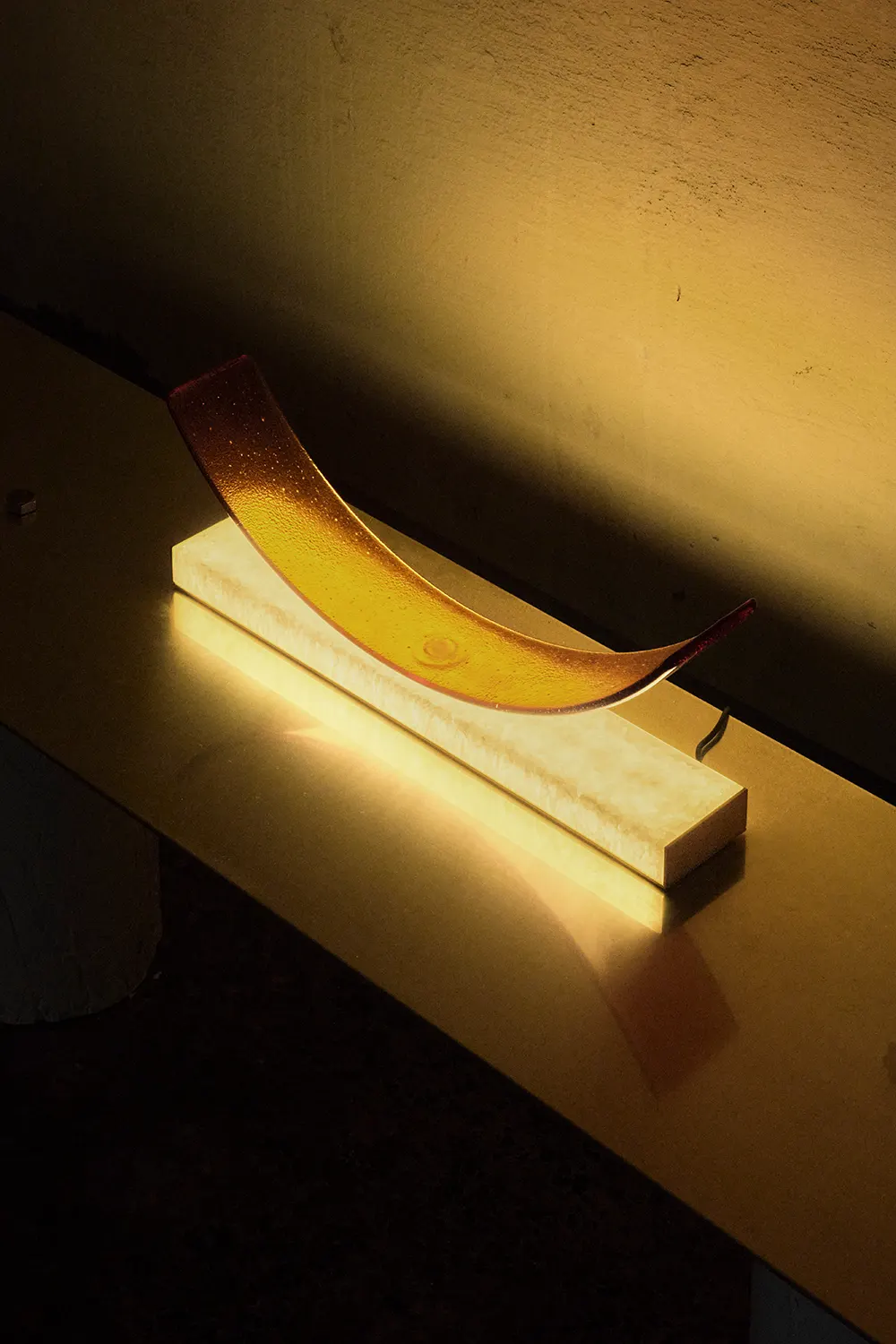
Many of the works engage with raw or biological materials – mycelium, reclaimed marble, copper, glass. How important is material sourcing to your gallery’s ethos?
Material sourcing is key within the gallery’s ethos. The fluidity within the disciplines of creatives is directly connected and reflective of the material research and exploration that they go after with each of the work they create. Material carries history, energy, and labor. At ZAROLAT, we look for makers (both in design and fine art) who are sensitive to that and who see material as a collaborator, not just as a tool.
Especially for our show OMNIA, all artists were challenged to go beyond their ordinary processes to create new works that really pushed their own boundaries as well as the boundaries of materials – whether it was an experimentation with mycelium, mirror infused glass, the common clay or a red marble column that dates back to Venice in the 1700s.
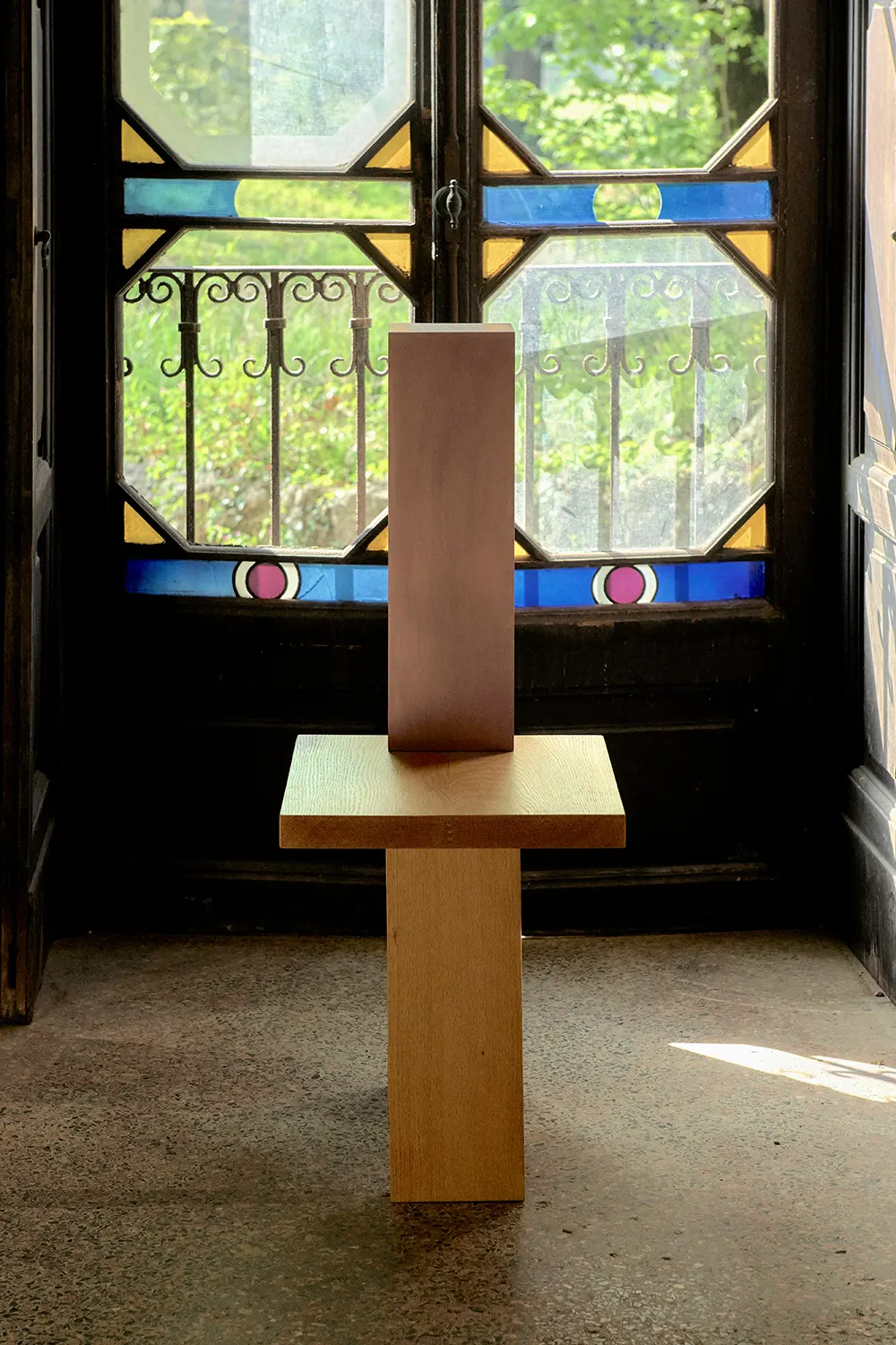
You’ve described the Dumbo space as “somewhere in between” a fine arts gallery and a furniture showroom. What do you think happens creatively in that in-between?
That in-between is where all the exciting questions arise from I think. Where does art end and design begin? Our Dumbo gallery isn’t designed to give answers – it’s meant to stretch those definitions and provide an open space for all creatives to get together and ask questions, and then discuss those questions.

You’re an architect by training, and you render each show’s floor plan by hand. How does architectural thinking shape your curatorial process?
Architecture gave me the tools to have spatial awareness. That’s why I am conscious of volume, atmosphere and sequence when I install a show. Even if it’s a simple rectangle, all pieces need to come together and make sense as a whole. I put each piece in plan to see actual proportions and scale, making sure the circulation contributes to the overall experience and how we view each object.
There is something intimate about tracing before a show exists. For me, each exhibition is a temporary architecture and I treat them with the same care I would a built project.
OMNIA includes a majority of women artists and designers, many working across mediums. Was that intentional, or a reflection of who you naturally collaborate with?
It wasn’t a quota or a strategy – it was organic. I’m drawn to voices that are attuned to materiality, to nuance, to the in-between. Many of those voices happen to belong to women. I think it also speaks to a shift in the design world where power is no longer defined by volume or scale, but by subtlety and depth. There’s a quiet radicalism in the way these women work, and I’m honored to offer a platform for that.
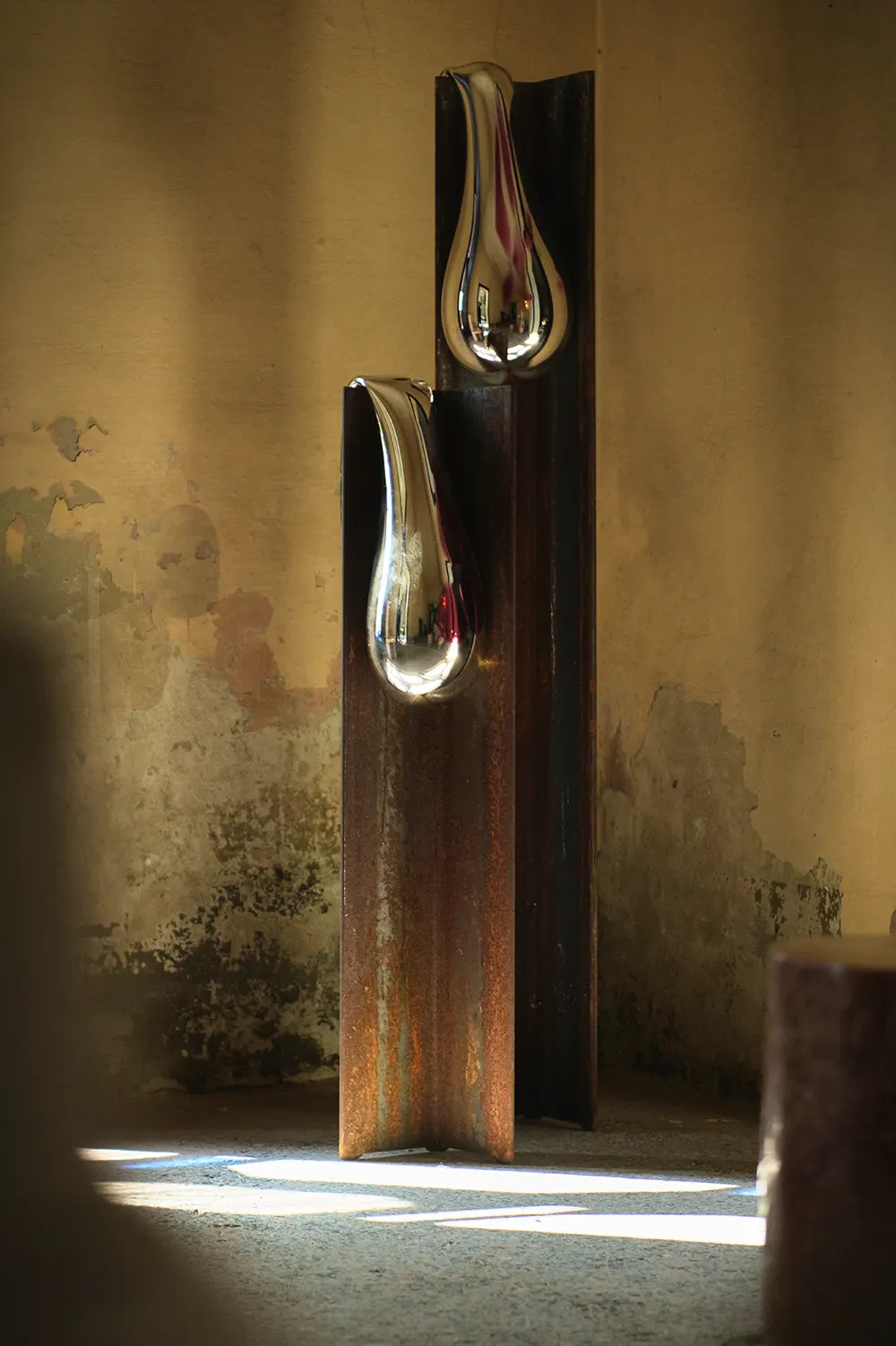
There’s a quiet spirituality in the show, works that seem to meditate on nature or human presence. Was that an instinctive curatorial direction or something more planned?
It was intuitive, but not accidental. I’m interested in objects that hold presence – not just aesthetic, but emotional or energetic presence. The works in OMNIA ask you to slow down, to notice texture, to feel time – with the exquisite presentation of deep material research and craftsmanship. This has been the case since the first curation in the gallery and it was not planned – I am naturally drawn to raw textures and the Earth, and so do a lot of people. Because we are nature. At least that’s what I believe in! That, to me, is a form of spirituality. Not religious, but reverent. Reverent toward nature, toward labor, toward the act of making.
We as a society are so disconnected from the truth in today’s modern world we live in. Artists and designers are critical while creating and in this climate that’s a brave act even though they don’t do it for the sake. They create works that have that energetic presence for me because of their handmade nature, their materiality or for another reason, so my spiritual belief system I guess is somewhat reflected in ZAROLAT’s curations and really showed itself at OMNIA.
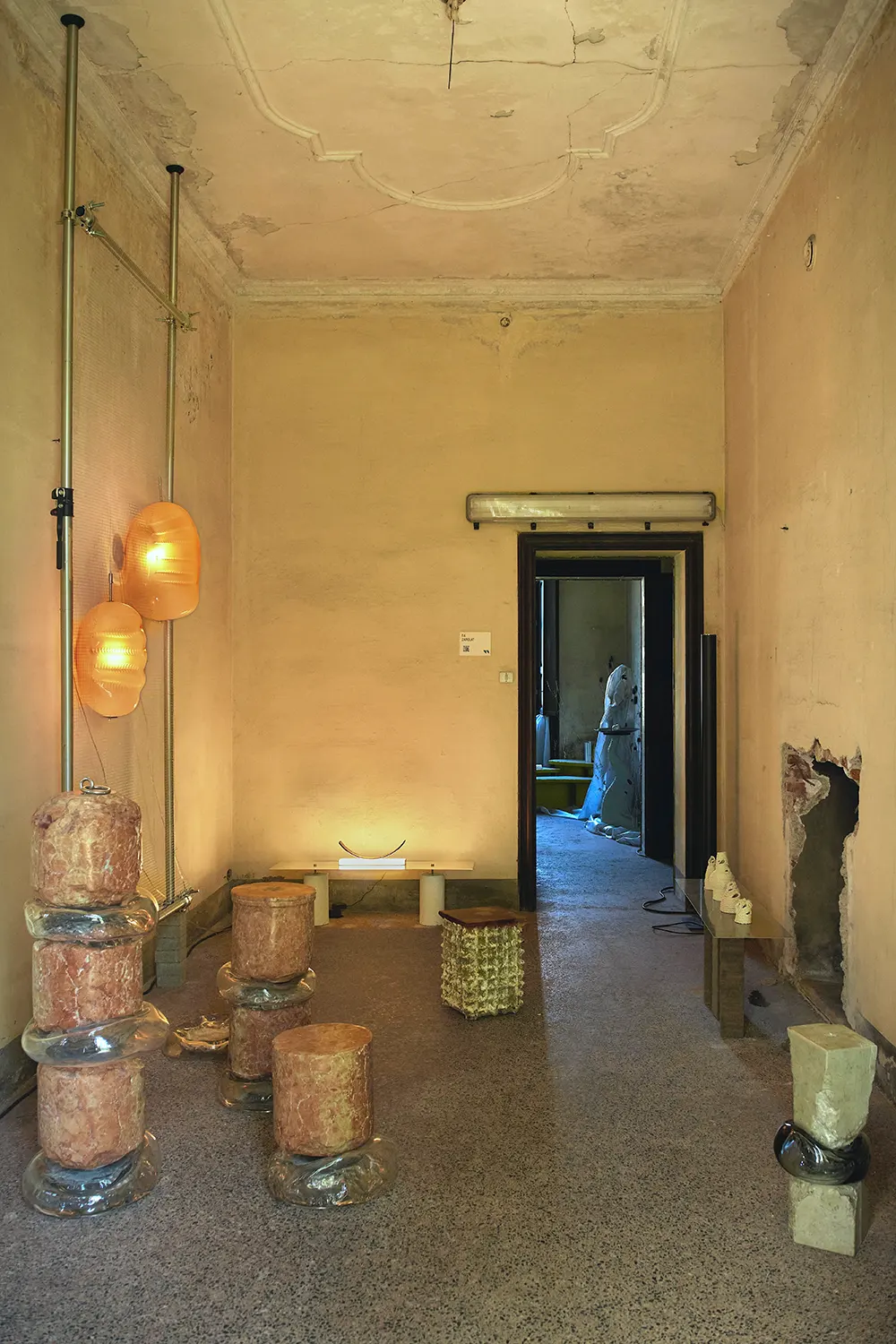
What conversations do you hope OMNIA starts, particularly when it comes to how we define function, form, or sustainability in design today?
I hope OMNIA invites us to sit with ambiguity. I think we’ve inherited a very binary lens around design – form vs. function, art vs. use, beautiful vs. responsible. OMNIA proposes a third path – one where form is function, and sustainability starts with slowness, with attention. It’s a different kind of a system – one built on care, not speed.
Other than spiritual oneness that it wants to put forth as the social idea, it invites you to perceive each piece on its own but art and design as a whole.
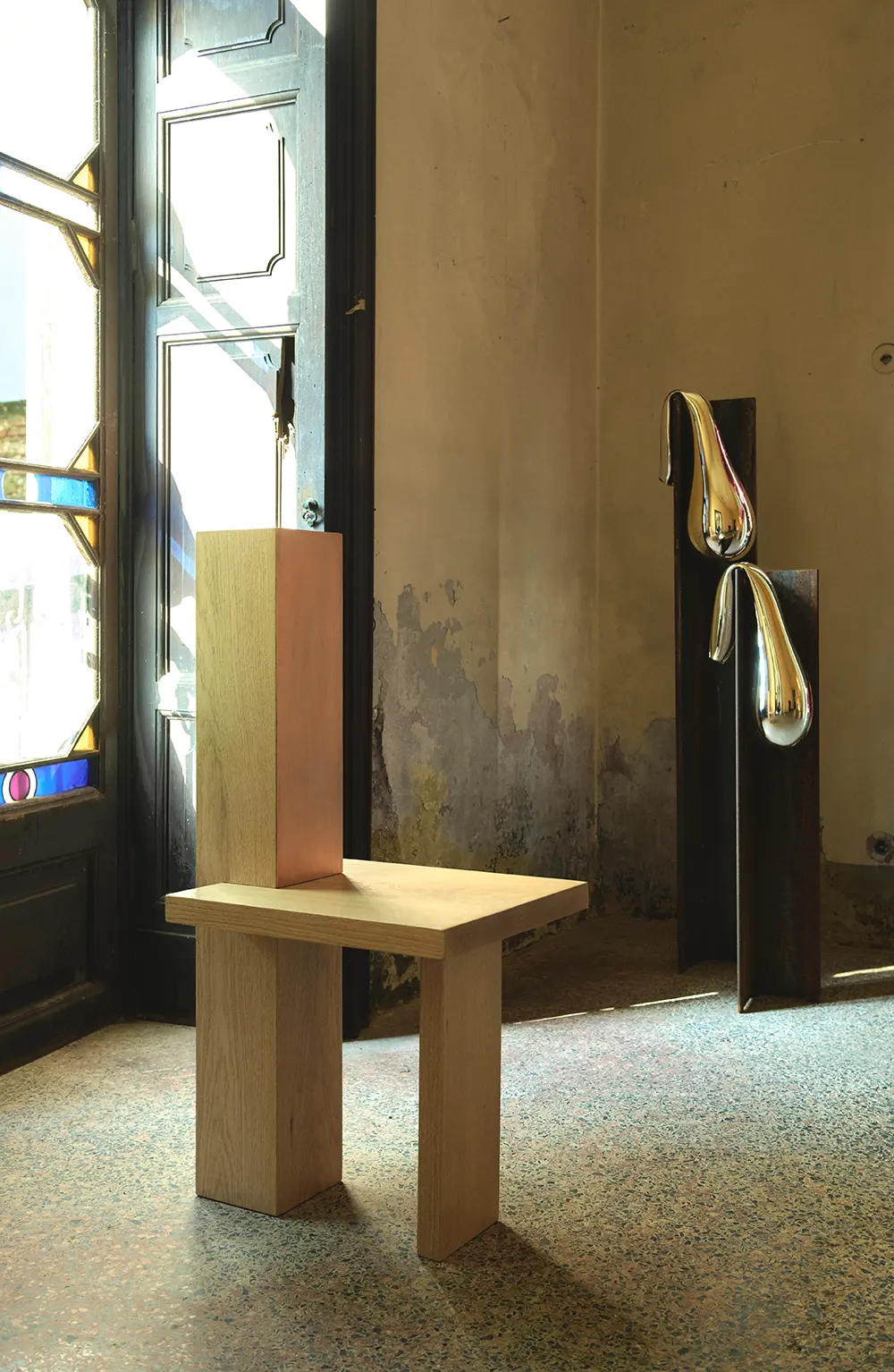
You’ll soon be expanding OMNIA for NYCxDESIGN, including collaborations with other Brooklyn spaces. How do you see ZAROLAT growing within the local design ecosystem?
Brooklyn has always been a place of porous boundaries – between disciplines, communities, ideas (and it’s also very personal for me since it has been my only home in New York.) As ZAROLAT grows, we want to stay responsive to that. For NYCxDESIGN Week, we’re expanding OMNIA not in scale but in collaboration with the show, ‘GRID’ – inviting other thinkers, and makers into the dialogue. We are trying to deepen the ecosystem. I see ZAROLAT as a connector, a host, a space where slow thinking and experimental design can coexist. My view about blurring the rigid boundaries of how we define contemporary art and design also reflects in the way I would like to use the space – hosting gatherings, book talks and other events to promote exchange and critical thinking.
Our physical location is key for the strategic access that I have to my next door neighbors within the block, and the greater community that we have here in Dumbo. We also have a whole team actively working to support artists and art spaces in the neighborhood and I feel very fortunate to be integrated into this hardworking community.



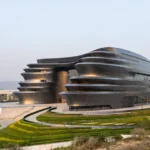
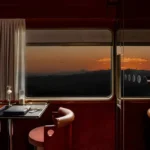
this is gorgeous! i remember them from Alcova!